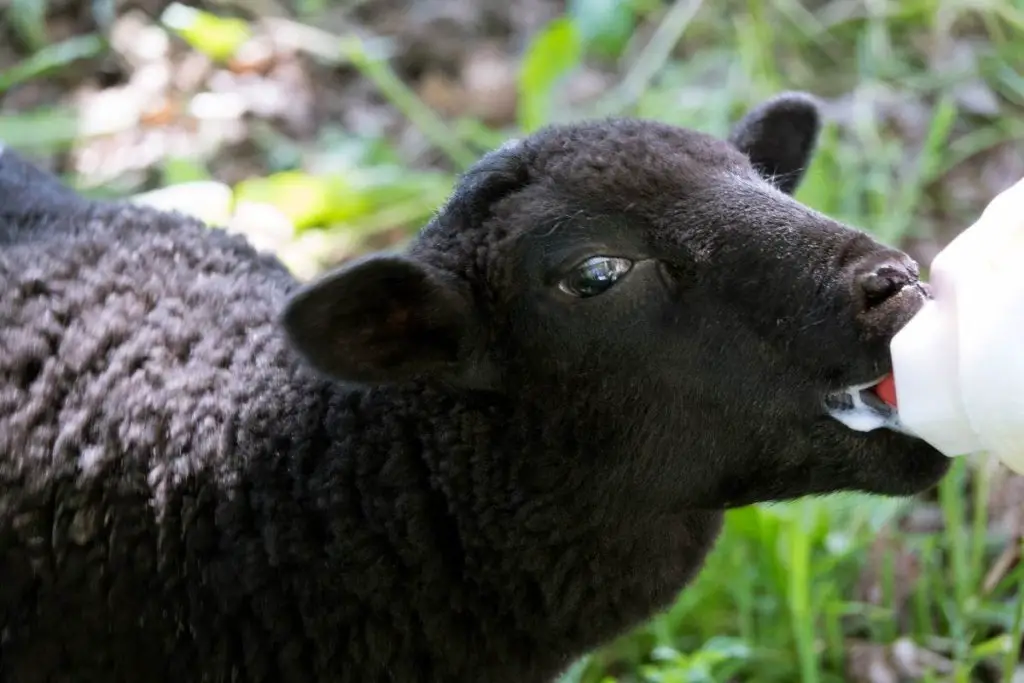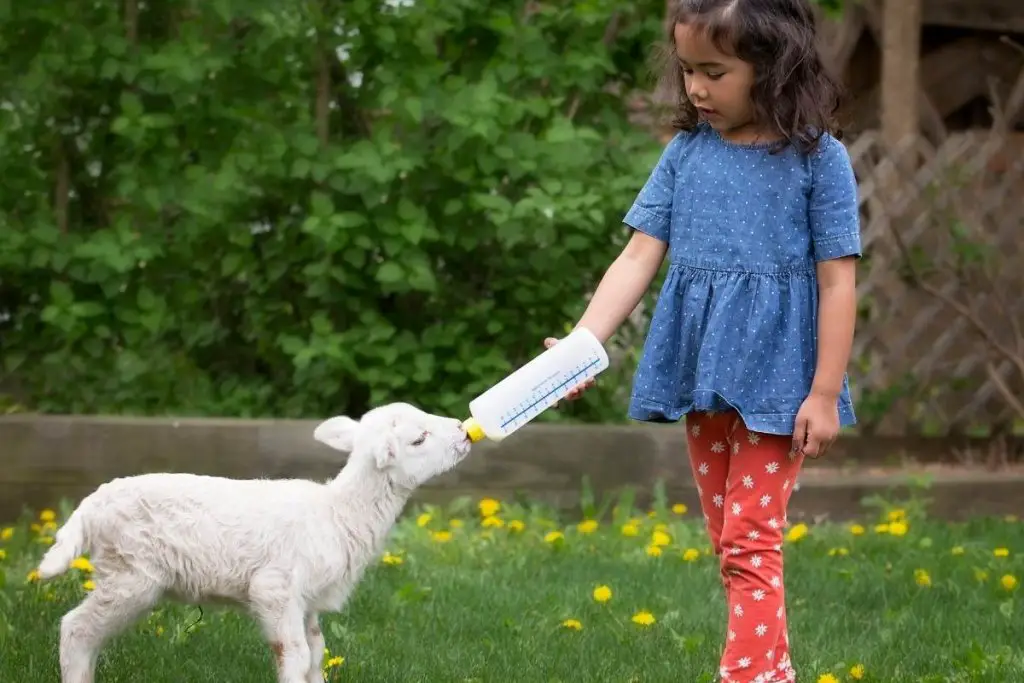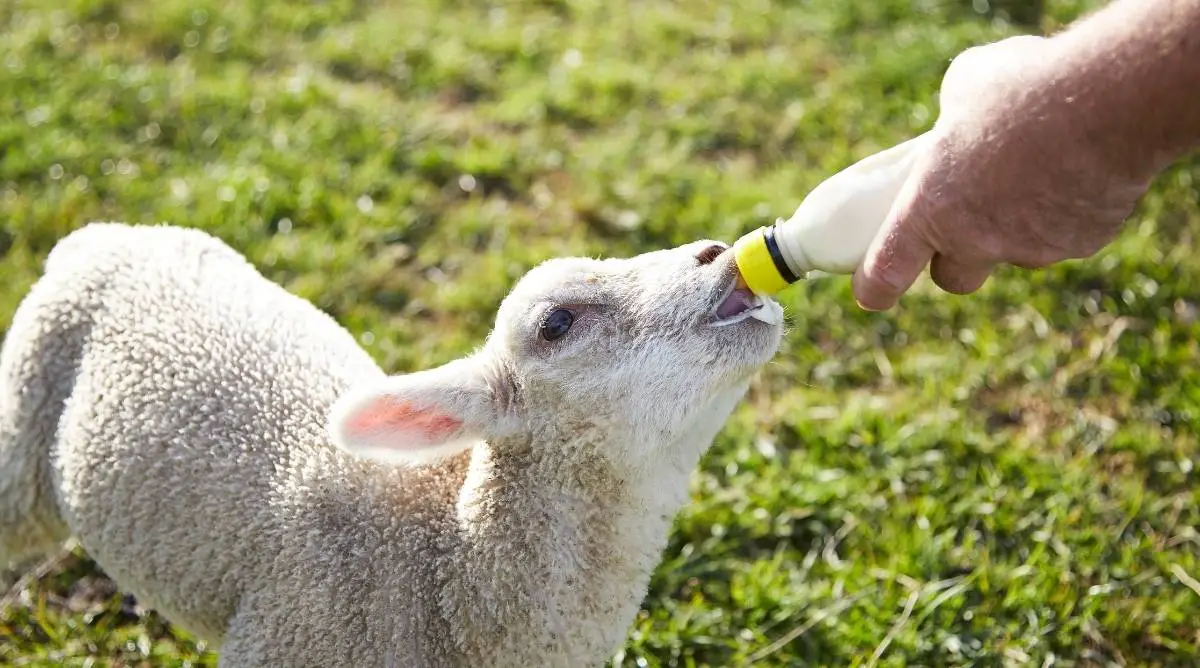You can bottle feed your lambs as soon as they are born. There are pros and cons, so make sure it's necessary. Have a vet check the lamb, wash and sanitize the bottles and equipment, measure an appropriate amount of milk, position the lamb, and start bottle feeding.
Table of Contents
How to bottle feed lambs
In an ideal world, lambs would get their mother’s milk. But sometimes this is not possible. The ewe may not produce enough milk to feed her offspring, especially if there have been multiple births. In some cases, the mother may have died or may suffer from an illness.
In these cases, bottle feeding the lambs will be necessary. Here’s how to do so:
- Have a vet check the lamb: Have a vet check the lamb to ensure they do not have any health conditions that make bottle feeding an unviable option.
- Wash and sanitize the bottles, nipples, and other equipment that will be used to feed the lambs. Wash them with soap and hot water, and then steam the bottles (as you do with human baby bottles.)
- Make sure you get colostrum. Colostrum is a substance that ewes produce in the first 24 hours after giving birth. It is packed with nutrients, and lambs need it to thrive. Try freezing extra colostrum so you have it on hand for bottle fed lambs. If you do not have other ewes on hand to get colostrum from, you can get powdered colostrum, or even get colostrum from cows.
- Choose the type of milk. One option is to use another source of whole sheep’s milk (for example, from another ewe that is not the mother of the bottle lamb). If you’re using powdered formula, make sure it’s a milk-based powdered formula specialized for lambs (rather than soy-based formula). Follow the packaging directions and mix it with the correct amount of fresh water. Too much powder may make it more difficult for the orphan lamb to swallow the milk. Too much water will excessively dilate the formula.
- Measure the amount of milk needed. Generally, lambs need to drink 20% of their body weight in milk per day.
- Place the formula inside a bottle and attach the nipple. Make sure to have the lid secured to avoid leaks. Shake the bottle if you’re using formula—no need to shake if you’re using whole milk for feeding.
- Position the lamb. Cradle the lamb on your lap. Present the nipple of the bottle at a slightly higher level than their mouth and let them take in the scent of the milk before feeding.
- Prepare towels or other cleaning materials. Feeding lambs will result in a mess. Be prepared ahead of time.
When can lambs be bottle fed?

Lambs can be bottle fed from birth. They are gradually introduced to solid food around eight weeks old.
Lambs need to be fed every few hours after they’re born. They are fed less and less frequently after the first few weeks.
How much milk should a baby lamb drink?
Newborn lambs should drink at least 1-2 ounces per pound of body weight of colostrum within 12 hours of birth.
After that, a general rule of thumb is that a lamb needs to drink 20% of its body weight in milk per day.
Here’s what that might look like:
- 1-2 days old: 4-6 ounces of milk four times per day
- 3-7 days old: 8-10 ounces of milk three times per day
- 1-2 weeks old: 12-14 ounces three times per day
- 3-6 weeks old: 16-20 ounces two times per day
- 7-8 weeks old: 20 ounces two times per day
After eight weeks, lambs will start weaning.
Pros and cons of bottle feeding a lamb

Pros
- It’s often necessary for the lamb’s survival, depending on the circumstances of the ewe.
- You have greater control over the lamb’s feeding schedule, so you may be able to help the lamb put on weight faster.
Cons
- The lamb doesn’t get colostrum and antibodies from its own mother’s milk.
- Even when lambs are given milk replacer, they may lack some nutrients and require supplements.
- Bottle feeding takes more time and management than just letting lambs nurse as needed.

